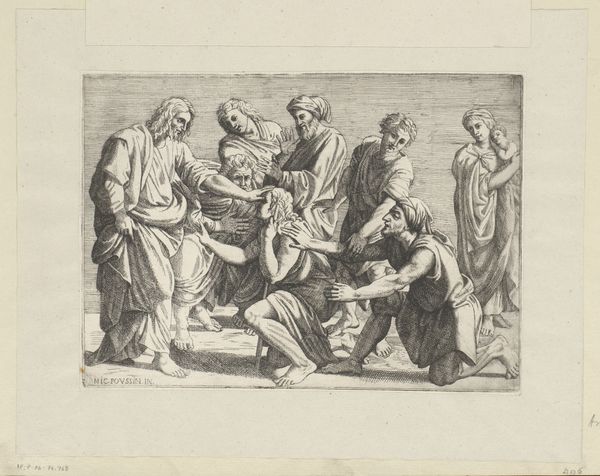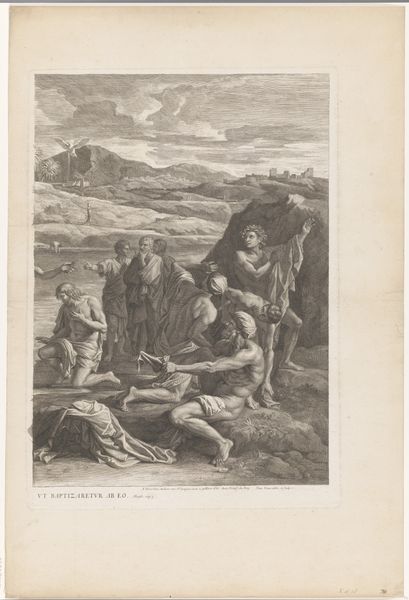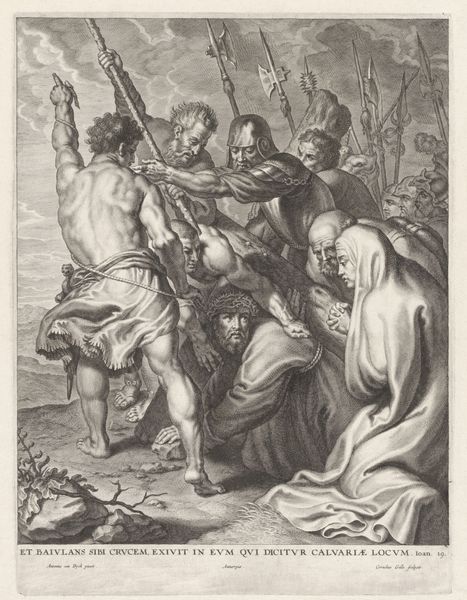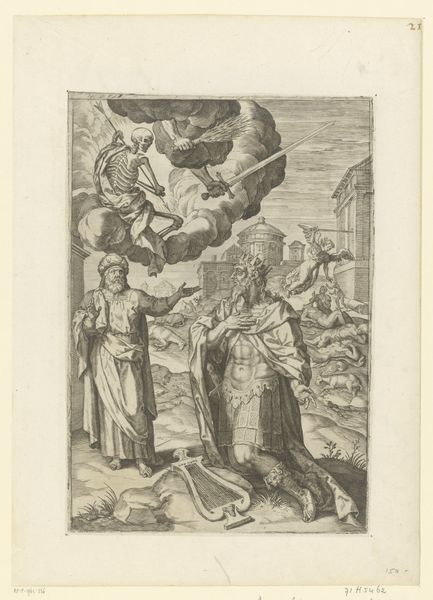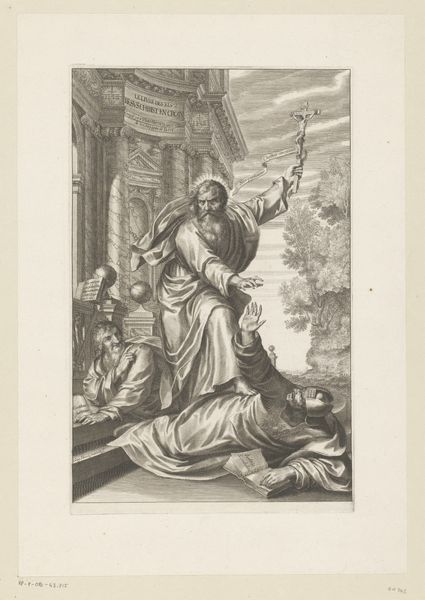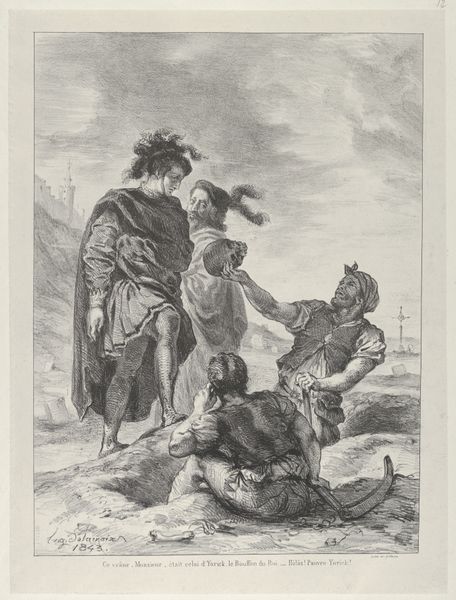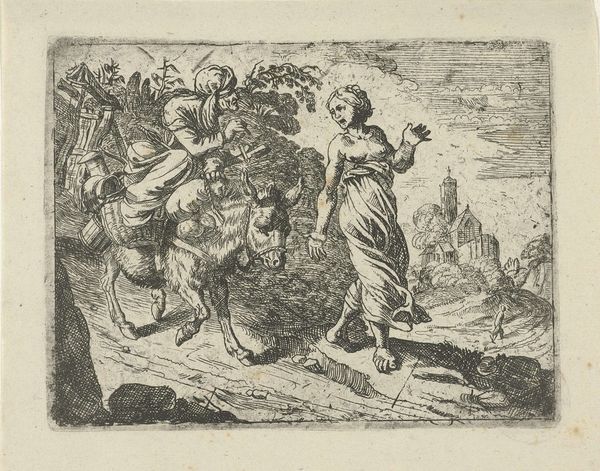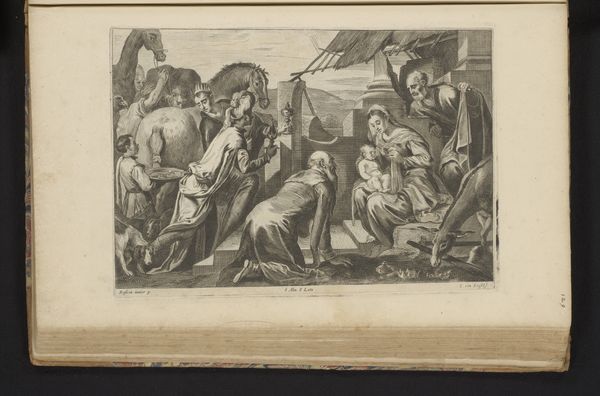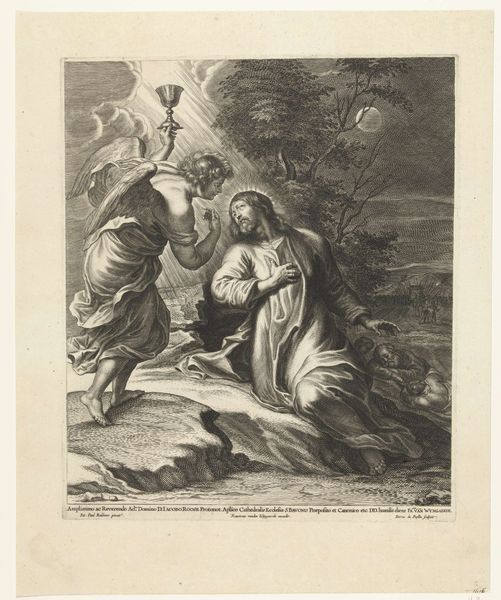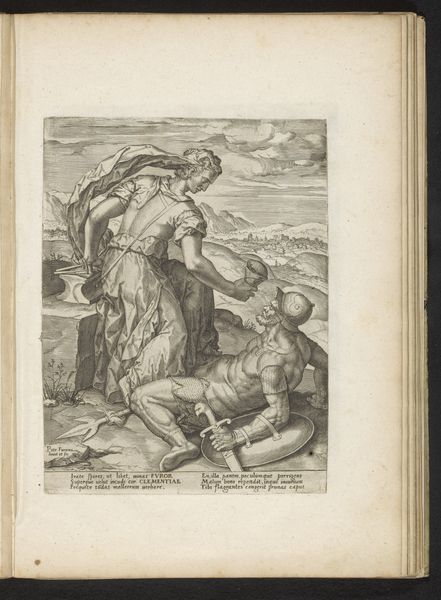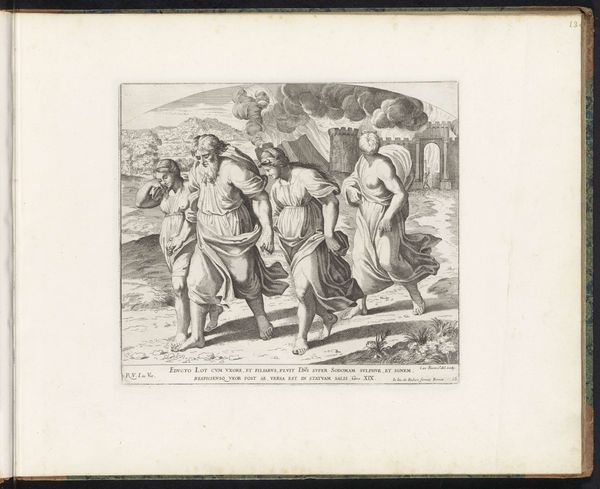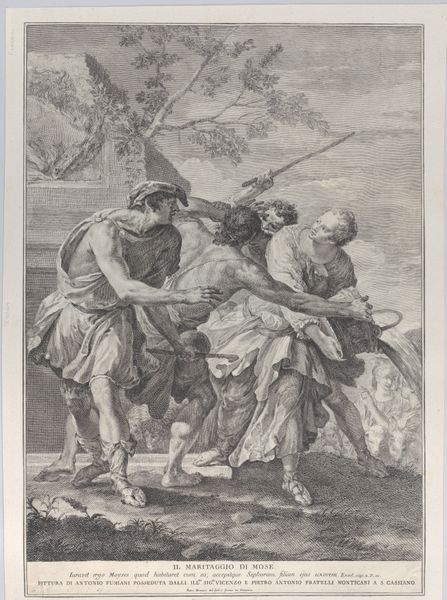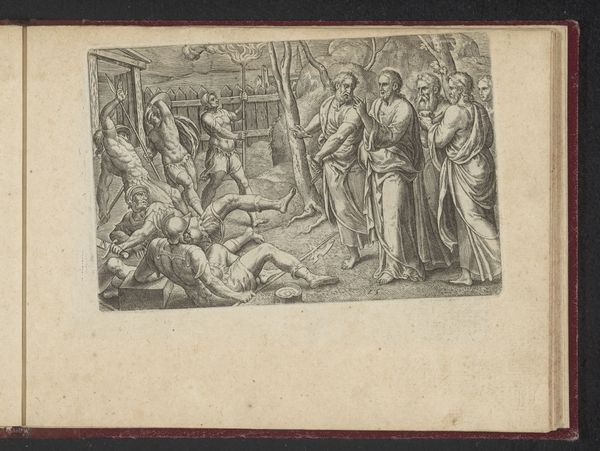
drawing, print, etching, paper, engraving
#
drawing
# print
#
etching
#
figuration
#
paper
#
genre-painting
#
history-painting
#
engraving
Dimensions: height 249 mm, width 180 mm
Copyright: Rijks Museum: Open Domain
Curator: This artwork is titled "Johannes doopt in de Jordaan", or "John Baptizing in the Jordan," a print made sometime between 1650 and 1700. The medium is etching and engraving on paper. Editor: It strikes me immediately as something delicate, yet weighty. The small scale, contrasted with the grand subject matter...there's a tension. What do you make of the technique? Curator: The use of etching and engraving suggests a deliberate and somewhat laborious process. Consider the number of hands potentially involved in the printmaking. An original drawing by an artist then translated onto a metal plate by a skilled artisan for reproduction, then printed on paper... Each step carries significance in its contribution to the final image that exists today. It's about how accessible such scenes became, how this facilitated distribution among wider audiences. Editor: That speaks to the politics of imagery, doesn't it? Here's a scene steeped in religious and political significance being disseminated. The power dynamics inherent in religious institutions…did these images function as propaganda? Curator: It's difficult to say conclusively if it served as outright propaganda. But certainly, disseminating such an image could subtly reinforce prevailing theological views or even particular power structures of that historical moment. Notice, though, that while the technique enables the reproduction, each individual print still bears unique marks of its production – variations in ink density or the paper itself that connect us with materiality. Editor: Absolutely. I am curious, in terms of artistic lineages, in its relationship to its historical moment. It seems as if this particular portrayal, emphasizing line work, relates to other works of similar age of production in order to appeal to collectors who were active buyers of works of this age. It served a historical role for the museum institution too; something in circulation as more art made during the period. Curator: Precisely! Understanding the history is vital to understanding the circulation of ideas then as well. So a simple-seeming scene of baptism in the Jordan really unfolds into considerations of skilled labor, image dissemination, and faith throughout history. Editor: Yes, what a profound effect by such lines created in time that are still visible on paper today. Curator: Indeed.
Comments
No comments
Be the first to comment and join the conversation on the ultimate creative platform.
